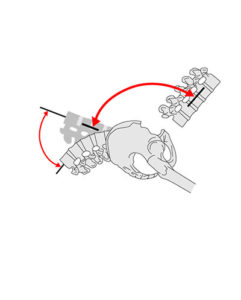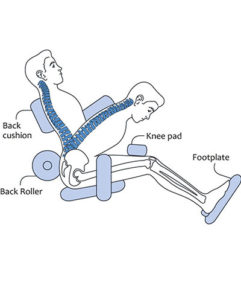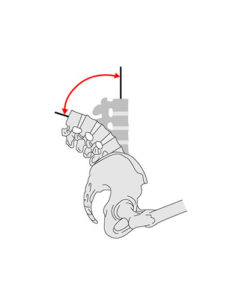MedX Therapy
Successful therapies are generally based on precise knowledge of the emergence of a problem. Atrophy in the musculature of the lower back is considered the primary risk factor for pain and associated problems.
This is where MedX therapy is beneficial.
First the muscles are tested to reveal any functional deficits the patient may have. Next a program is developed for therapy and the treatment is documented to measure the effectiveness.
To perform a functional analysis of the spinal muscles, the following prerequisites must be fulfilled:
- Isolation of the lumbar extensor muscles by pelvic fixation
- Elimination of gravitational pull on the body and upper body mass
- Measurement of soft tissue tension and the net muscle force
- Isometric testing over the entire range of motion (ROM)
- Muscle fiber typing by exhaustion reaction
This extensive diagnosis provides the basis for the patient’s treatment plan. The data obtained is compared with age, sex and weight specific standardized data from the University of Florida study.
The aim of the MedX therapy is to restore the function of the spinal column in areas of strength, agility, and endurance. By actively reconditioning the muscle these results are attainable.
The computer-assisted therapy devices, such as the Lumbar Extension Machine (LE) and Cervical Extension Machine (CE), provide an isolated and controlled training of the lumbar and cervical spine muscles. Through the patented fixation mechanisms, all accessory muscles of the muscle function chain can be eliminated.
Figures 1-3 illustrates the isolated movement amplitudes and test positions on the therapy machines for lumbar extension and cervical extension. For the lumbar extension, an isometric force measurement is made at seven different test positions at every 12° of the movement. For the cervical extension there is eight test positions at every 18°. The test involves an isolated movement over the full range, up to 72° for lumbar extension and 126° for cervical extension.
A study by Dr. Brian Nelson from Minneapolis, MN, reflects how these results can be achieved. 935 patients were involved in the study. A majority of these patients suffered from chronic back pain (pain over a period of more than six months) and were previously unsuccessful with traditional therapy. After 18 sessions the success rate of MedX therapy strengthened 85% of patients’ previously weak lumbar muscles, with average strength gains of 63.91%.
Figure 1:

The straightening of the upper body is a complex movement with a movement angle of 182°. If the movement amplitude of the pelvis is considered separate from the movement of the spine, the pelvis has an amplitude of 110° but the spine only measures 72°. Thus the lumbar spinal musculature only contributes 72° to spinal extension.
Figure 2:

Schematic representation of the patented MedX Pelvic Fixation system.
Figure 3:

Isolated lumbar spinal extension through pelvic fixation in the MedX lumbar extension machine.


